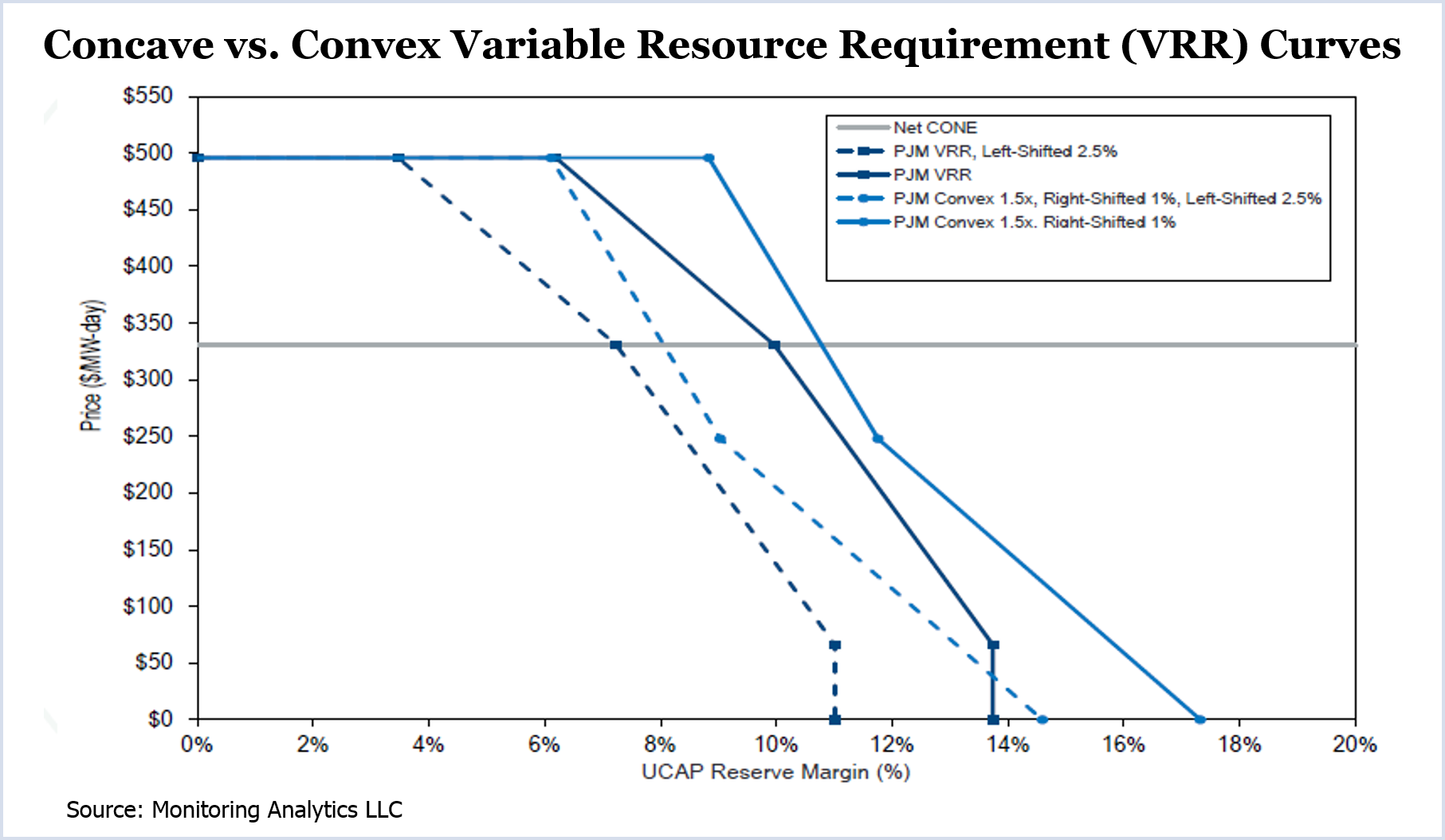
As a result, the Board of Managers will decide for itself whether to seek Federal Energy Regulatory Commission approval for PJM staff’s proposed changes, including a shift in the shape and position of the capacity demand curve.
The board must file changes with FERC by Oct. 1. Changes approved by the commission would be implemented for the 2015 Base Residual Auction (BRA).
Not Even Close
Stakeholders nearly reached consensus in PJM’s last Triennial Review of the market parameters in 2011. This time around, it wasn’t close.
In meetings of the Capacity Senior Task Force, members did reach agreement on several issues, including the use of a combustion turbine as the reference technology for calculating the cost of new entry (CONE). They also agreed to use data from the U.S. Bureau of Labor Statistics to raise CONE for inflation, replacing the proprietary Handy-Whitman index.
But agreement was nowhere to be found on changes to the variable resource requirement (VRR) curve.
Proposals by PJM staff, Public Service Enterprise Group (Package B) and Dayton Power and Light (Package I) all received less than 50% support in sector-weighted votes of the Markets and Reliability Committee, with only the Transmission Owners and Generation Owner sectors showing heavy support.
Virtually all members of the Electric Distributors and End User Customer sectors opposed the proposed changes and supported the status quo, which received a 56% vote overall.
A proposal to use the PJM plan but keep the current energy and ancillary services offset also failed.
Unconvinced
Load representatives said they were not convinced by arguments from PJM staff and the Independent Market Monitor that changes to the VRR curve were needed to prevent the RTO from falling short of its one-day-in-10-years loss-of-load expectation.
“We came dangerously close to the edge in January,” when the RTO nearly ran short of generation, FirstEnergy’s Jim Benchek said.
Exelon’s Jason Barker said the changes are needed to stabilize the capacity market and prevent retirements of “at-risk” coal and nuclear capacity.
But load representatives said PJM had failed to make its case for the changes, which Walter Hall of the Maryland Public Service Commission said could increase customers’ capacity costs by up to 50%. Hall said the PSEG and DPL proposals would likely increase capacity costs by more than the PJM proposal, which would have increased capacity revenues in the last three BRAs by $1 billion to $1.7 billion, according to a PJM simulation.
Carl Johnson, representing the PJM Public Power Coalition, said changing the curve was inappropriate now, at a time when PJM is also proposing a “redefinition” of what capacity is. (See related story, Reaction Muted as PJM Pitches New Capacity Product.)
PJM is asking “us to buy more of something we don’t have an understanding of,” Johnson said. “It’s not that we oppose any shift in the VRR curve for all time.”
PJM Executive Vice President for Markets Andy Ott said the proposed curve change “doesn’t mean we will procure more [capacity]. It means increased stability of the investment signal.”
Convex Curve
The PJM proposal would shift to a convex-shaped curve from the current concave shape. It would also shift the curve recommended by The Brattle Group, PJM’s consultant, to the right by 1%.
Additionally, it would reduce CONE values from the status quo, eliminate CONE area 5 and move Dominion into area 3.
The PSEG and DPL proposals would use most of the PJM proposal. The PSEG proposal would shift the recommended curve by 2%, increase CONE values for PJM’s five areas by 39% to 58% and increase the after-tax weighted cost of capital to 13.5% from PJM’s proposed 8%. The DPL proposal would move the curve by 2.5%, essentially eliminating the “holdback” that the Market Monitor has cited as one of the causes of “price suppression” in the capacity market. (See related story, Monitor: Resist Subsidies, Don’t Retreat from Markets.)
Ott said staff was likely to recommend its proposals regarding the shape and location of the VRR curve for consideration by the board. “I don’t have any reason for hesitating on those recommendations,” he said.
However, he said staff would reconsider its proposal to replace the current backward-looking energy and ancillary services offset with a forward-looking measure. While some stakeholders praised the concept, they said it needed more vetting before being included in a FERC filing.



